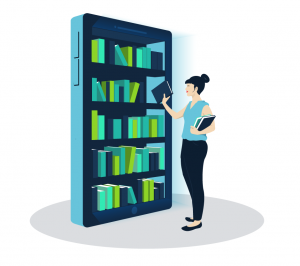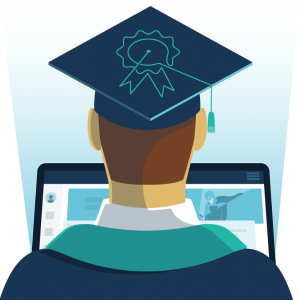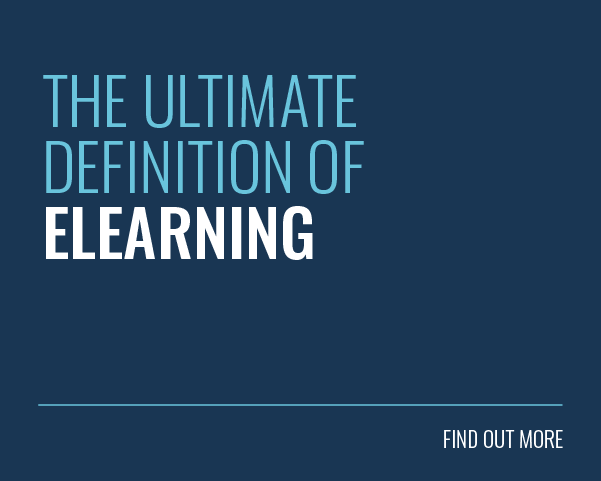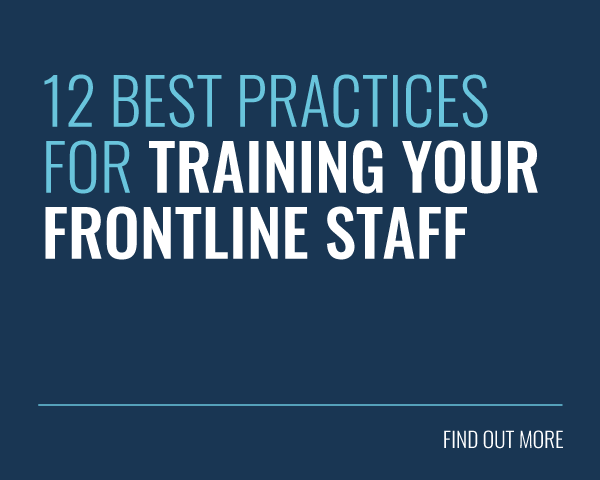Today’s working environments are fast-paced and evolve quickly. In order to get by, your employees will need the right mix of hard skills and soft skills.
Understanding the difference between these two skill sets and prioritising effectively will help you to unlock your team’s true potential.
Rapid technological advancements and industry innovations have caused organisations to struggle when it comes to deciding what skills to prioritise. Should they focus on improving technical hard skills or intangible soft skills?
This article will help you to understand the difference between these two skill areas. We’ll look at both hard and soft skills training, how to use online learning for both and how to balance these capabilities successfully.
Are you ready? Let’s shed light on the significance of both hard and soft skills!
Hard Skills Vs Soft Skills

Hard skills refer to job-related or technical knowledge and skills that individuals need to perform their job duties successfully. For example, programming, data analysis, accounting or operating specific machinery are hard skills.
Individuals usually need formal education, training programmes or hands-on experience to master these types of skills. After all, they are usually technical in nature. As such, hard skills can be measured and quantified.
Soft skills, on the other hand, are non-technical skills that help individuals thrive in their roles. Soft skills are also referred to as interpersonal or people skills, as these skills often relate to how individuals interact, communicate or collaborate with others.
In fact, soft skills cover skills like communication, teamwork, problem-solving, leadership and critical thinking. These skills are not specific to a particular job role or industry. Instead, they are useful and valued across most professions.
Hard Skills Training and Soft Skills Training
Okay, now we know the difference between hard and soft skills on a basic level. But how do these differ when it comes to training?
1. Focus
Hard skills training aims to improve your learners’ proficiency in performing specific tasks or using specialist tools. As such, hard skills training focuses on acquiring and developing specific technical or job-specific skills related to a particular role or task.
Soft skills training focuses on improving your learners’ interpersonal skills, which are essential for them to succeed, regardless of their job role. This results in a very different focus, as soft skills training aims to enhance non-job related skills.
2. Tangibility
Hard skills are typically tangible and measurable, whereas soft skills are harder to measure directly.
In fact, soft skills training involves behavioural attributes and attitudes. As such, it often focuses on improving awareness, understanding and application of these kinds of skills in different situations.
Hard skills training can be more structured and standardised. As a result, you can have clear learning objectives and assessments that are easier to evaluate.
3. Training Methods
Because of the difference in focus, hard and soft skills require different kinds of training methods. Hard skills training often involves structured lessons, assessments and practical exercises.
In turn, soft skills training emphasises interactive and experiential learning. As such, your training could involve role-playing, group discussions or case studies.
We will delve into the different training methods later on in this article.
4. Transferability
Soft skills training arms your learners with various skills that are useful in different roles. In fact, these skills are highly transferable as you can apply them across various industries and working environments.
Hard skills are harder to transfer as they are often specific to a particular industry or role. Some hard skills, of course, have a broader application, but most of them are more specialist than soft skills.
5. Adaptability
Hard skills training can involve specific machinery, tools or approaches. As such, this kind of training requires frequent updates when these tools and practices advance or change.
In addition, it’s typically harder to adapt your hard skills training content to other contexts. After all, these skills serve a very specific purpose.
Soft skills are relatively universal and stable. As these skills are less prone to rapid changes, they are also easier to maintain and keep relevant without the need to update your training content constantly.
Hard Skills Training
Hard skills training focuses on improving your learners’ knowledge and skills on specific subject matters, usually to improve their technical competencies. These skills help them to perform better in their roles and operate more efficiently.
Today’s high-demand hard skills highlight recent technological advancements. In fact, Forbes suggests that the following are top ten hard skills companies need right now:
- Blockchain
- Cloud computing
- Analytical reasoning
- Artificial Intelligence
- UX design
- Business analysis
- Affiliate marketing
- Sales
- Scientific computing
- Video production
Typically, your hard skills training programme combines structured courses and hands-on exercises, where individual learning units or training sessions only cover that specific skill.

In fact, hands-on practice is a crucial part of hard skills training as it allows your learners to apply their knowledge in real-world contexts. This practical experience is an excellent way to improve learners’ proficiency.
By learning from relevant subject matter experts (SMEs), like top-class designers, skilled programmers or machinery operators with years of experience, your learners can enhance their skill set effectively.
As such, by combining structured learning programmes with hands-on practice and practical assessments, you can create a comprehensive learning experience that promotes a deep understanding of the subject matter. This will ensure your learners are prepared to apply their new skills successfully.
Hard Skills Training in the eLearning Era
Because of the emphasis on hands-on practice, it may seem like in-person learning is the only way to deliver successful hard skills training. But this doesn’t have to be the case.
You can also deliver high-impact hard skills training online, so long as you have an effective learning platform, like a learning management system (LMS). In fact, online learning and digital tools have helped to make training more accessible and convenient.
In addition, online learning makes it much easier to personalise training for each individual learner. And that can be a big time saver, especially if you are a large organisation with thousands of learners!
It’s likely that your employees in different job roles also require different sets of hard skills. For example, your sales team will need to learn how to use various customer relationship management tools, but these tools will not be relevant to your tech team.
In turn, it’s essential that individuals working in a warehouse or a factory know how to use relevant machinery safely. However, this is not necessarily relevant knowledge for your marketing folks.
With online learning platforms, you can offer tailored learning experiences that focus on your learners’ specific needs and skills gaps. They can also progress at their own speed and hone in on areas where they need more practice.
Online Learning Tools for Hard Skills Training
Now that we know hard skills training is possible with online learning, let’s take a look at how digital learning platforms help you to conduct hard skills training effectively online.
1. Course Management
Digital learning platforms allow instructional designers to create, organise, manage and evaluate courses from one single platform.
Similarly, you can arrange content into tailored learning pathways that get harder as learners progress. This ensures your learners build upon their knowledge and achieve true mastery.
2. Content Delivery

Like course management, online learning platforms also provide a centralised location for hosting and delivering your course content. Most of these platforms support a wide variety of formats.
For example, your content can include video lectures or demonstrations, presentations, documents, interactive learning units, quizzes and even hands-on practice tools like scenarios.
These mediums enable you to create a cohesive hard skills training experience that provides both hands-on exercises and structured learning opportunities.
3. Assessments
To ensure your learners’ hard skills are improving, you need to assess them. While online learning may limit assessment through observation, digital platforms do provide a wide array of features for assessing your learners.
For example, you can include in-unit quizzes, exams or assignments. You can then create reports on organisational, team or individual levels to analyse performance.
4. Immediate Feedback
In physical, instructor-led training sessions, instructors can share feedback throughout any hands-on practical exercises. Initially, moving training online meant limited feedback opportunities, but luckily, this is not the case anymore.
Nowadays, you can implement immediate feedback and other performance indicators. For example, your training units can include quizzes that provide either positive or negative feedback based on your learners’ answers.
You could even ask learners to upload evidence of them completing hands-on exercises and provide more detailed feedback as necessary.
Similarly, if you use a gamified learning platform, your learners can get indirect feedback. As they collect Experience Points, they increase their ranking on the Leaderboard. This helps learners to understand whether they are moving in the right direction.
5. Certifications

Some hard skills, like operating machinery or using a specific tool, may be essential for succeeding in a role in your industry. That’s when certifications come in handy!
Certifications help you to showcase your mastery of a topic. In fact, in some cases, you need to be able to prove you have a certificate or qualification for a specific topic before you’re able to carry out that specific task.
Learning management systems often provide the ability to issue certificates or credentials when your learners complete a training course. Your learners can then share these certificates in their network or add them to their resumes.
Some platforms, such as Growth Engineering LMS, will even let you add an expiry date to your certificates to account for any required renewal processes.
6. Analytics and Insights
As explored previously, hard skills are typically easier to assess because they are tangible. However, assessing training, in general, is often one of the biggest L&D challenges organisations face.
Today’s digital learning platforms come with an extensive reporting suite. This makes it easier than ever to track and report on any training initiatives. You can then improve your hard skills training based on the data you have at your fingertips.
7. Learner Engagement
Hard skills training can feel long and arduous to your learners. After all, they have to learn about highly detailed and often difficult concepts or tools. However, this information is often necessary for them to perform well in their roles.
That’s why it’s essential to keep your learners engaged! Learning platforms come with many engagement features that keep your learners motivated to continue their training.
For example, most LMS platforms now utilise gamification. Gamification helps you to make less interesting topics more engaging and fun to explore by taking mechanics from games and applying them to other contexts.
Soft Skills Training

Soft skills are essential for all individuals in your organisation, regardless of their job roles. After all, soft skills, like being organised, building relationships or demonstrating leadership, emphasise the importance of the human element in business.
These skills enable your learners to navigate their working environment, collaborate with others and get their tasks done efficiently and effectively. That explains why 93% of employers consider soft skills either essential or very important.
However, as soft skills are non-tangible, they are often considered harder to teach and measure. Even still, a study suggests that improving the soft skills of factory workers resulted in a 250% ROI.
This only highlights the importance of soft skills training. In fact, capabilities like communication and leadership can sometimes be just as important as technical skills.
According to Forbes, these are the top ten most essential soft skills in 2023:
- Communication
- Leadership
- Teamwork
- Creativity
- Time management
- Adaptability
- Problem-solving
- Work ethic
- Critical thinking
- Conflict management
Soft Skills Training in the eLearning Era
Soft skills can be taught through a range of training courses that cover different topics, whether that’s communication, decision making or creative problem-solving.
However, learners are also likely to pick up these skills during their hard skills training. For example, a group project on a specific technical topic can improve learners’ collaboration, communication, organisation and time management skills at the same time.
Soft skills training is often more complex than hard skills training because of its subjective nature. But luckily, it’s also possible to conduct in an online learning environment.
For example, you can host workshops, seminars, scenarios or 1:1 coaching sessions in addition to your more traditional eLearning modules. This combination helps you to create a structured training programme that ensures a systematic approach to improving soft skills.
Hands-on exercises are also essential for soft skills training. After all, this allows learners to apply and refine their soft skills in realistic situations.
Through practice, they can gain valuable experience, learn how to navigate complex social environments and develop the confidence they need to apply soft skills across different contexts.
Online Learning Tools for Soft Skills Training
Online learning offers several advantages when it comes to creating, delivering and analysing soft skills training. Let’s explore how you can create successful soft skills training online.

1. Scenario-Based Learning
Scenarios are an excellent way to introduce your learners to real-world-like situations. They provide a safe and supportive environment for your audience to practise and hone their soft skills.
For example, you can use scenarios to simulate customer service situations where your learners can improve their communication and social skills.
Similarly, these kinds of simulations are extremely effective in teaching critical thinking and problem solving. After all, your learners’ actions will impact how the rest of the scenario plays out.
2. Social Learning and Collaboration
Online learning platforms facilitate social learning and collaboration, even remotely. This interactive environment encourages your learners to develop soft skills such as communication, teamwork and empathy.
With a digital learning platform, you can implement features like Live Chats, Social Feeds and Clubs. As a result, learners can engage in group discussions, share their knowledge, participate in team projects and learn from their peers and instructors.
These social learning tools improve engagement and help learners develop the skills they need to communicate and collaborate effectively.
3. Self-Paced Learning
In-person instructor-led training typically takes place at a set time in a set location. Online learning, on the other hand, allows your learners to improve their skills at their own pace.
This adds much-needed flexibility as learners can focus on specific soft skills areas that they need to develop. Your learners can revisit content units or resources whenever they wish.
This, in turn, promotes ongoing learning and self-improvement as learners can continue their learning journey based on their individual schedules and preferences.
4. Personalised Learning
We tend to think that leaders with good leadership skills inspire and respect their teams and have a kind and empathetic communication style. Similarly, people with good time management skills tend to complete their tasks on time and manage their workload effectively.
As such, there are some near globally agreed-upon standards to work towards. That said, we all also have our own unique capabilities and understanding of what good soft skills, like communication and leadership, look like.

That’s where personalised learning comes in. Personalised learning helps you to meet your individual learners’ specific needs and training goals. This is essential for true skills development, as the term ‘communication’ alone covers various different skills and strategies.
After all, one of your learners might be an excellent written communicator but lack empathy. Similarly, another individual might be well-spoken but lack skill in active listening. These learners will need personalised training to bridge their specific skills gaps.
5. Analytics
Analysing soft skills improvements can be difficult. After all, these skills involve behaviours, attitudes and interpersonal interactions that are difficult to quantify and measure objectively.
Soft skills training doesn’t have standardised assessments as these would vary across different contexts and organisations. Unlike hard skills, which often have specific metrics or outcomes, assessing soft skills requires you to use subjective judgement and interpretation.
Despite these challenges, it’s essential for you to analyse your soft skills training to determine the impact and effectiveness of these training initiatives. Online learning platforms can enable this.
For example, you can use technical specifications, like xAPI, that enable tracking and analytics beyond your LMS. This helps you to capture data from different learning experiences, like mobile learning, simulations, social learning, experiential learning and more.
6. Integrations
Digital learning platforms can integrate with other tools or platforms that can help to facilitate soft skills training. For example, you can incorporate video conferencing tools for virtual workshops, assessment platforms or organisation tools.
These integrations help you to create a seamless learning experience. In turn, your learners get access to enhanced tools and features that guide them in their soft skills development.
Balancing Hard Skills and Soft Skills Training
As we now know, both hard skills and soft skills are essential for successful employee performance. In fact, research has found that 85% of career success comes from soft skills and people skills, whereas technical knowledge only makes up 15% of career success.
Of course, there are limitations here. You might be a very well organised pilot. But if you can’t fly a plane then your career will never take off. As such, you need to balance hard and soft skills to ensure your learners thrive in today’s dynamic and interconnected working world.
Ultimately, the right balance will depend on the results of your training needs analysis (TNA). To find out more, watch the video below.
While hard skills are essential for performing specific tasks, soft skills play a crucial role in overall professional success and career advancement. Combining these skills leads to a well-rounded and productive employee.
However, let’s go into more detail to explore why balancing hard skills training and soft skills training is necessary.
1. Enhanced Performance and Job Satisfaction
A good mixture and balance of hard and soft skills mean that your employees will be better equipped to handle challenges and deliver high-quality work. After all, they will have the technical competencies they need but also excel in interpersonal situations.
Having a balanced skill set can also help you to increase job satisfaction. Individuals with great hard and soft skills can effectively navigate their working environments and build meaningful relationships.
By making valuable contributions to their teams and the organisation as a whole, your employees can experience greater fulfilment in their work. After all, who wouldn’t want to feel successful?
2. Synergy Between Hard and Soft Skills
Hard skills provide an excellent foundation for succeeding in a role. After all, nearly all jobs have some special areas of expertise that employees need to know in order to excel.
As such, hard skills enable your employees to perform their job responsibilities with precision and efficiency.
However, it’s hard to get to the top with only technical skills. The most successful individuals are typically organised, manage their time well, network effectively and collaborate with others.
That’s why a synergy between hard and soft skills training is the only way to develop stellar employees.
3. Improved Leadership and Teamwork

Networking and collaborating are a key part of today’s working world. Similarly, 83% of organisations believe it’s essential to develop leaders at every level of the company. That’s where soft skills and hard skills come into play.
In a team setting, soft skills ensure each individual can communicate and collaborate well in order to contribute to the overall success of the team.
However, if your team members do not have the necessary hard skills to operate in their roles, they will be a hindrance rather than a helping hand.
Likewise, successful leaders should have a combination of hard and soft skills. This ensures your leadership team has the technical knowledge to lead their teams and the soft skills needed to inspire, engage and foster a positive work environment.
4. Adaptability
Business environments change and evolve constantly. These changes are often driven by technological advancements and shifting market or economic factors.
Individuals with a balanced set of hard and soft skills are likely to adapt to these changes more effectively.
While hard skills may become outdated when technology advances, soft skills, like adaptability and critical thinking ensure your learners can adjust to new situations. Your learners can then focus on updating their hard skills.
Final Words
Balancing hard skills training with some soft skills courses is essential for individual and organisational success. Luckily, online learning makes it easy to combine them into one seamless learning experience.
By investing in both types of skills training, your learners can maximise their potential and help you supercharge your organisation as a whole.
Having well-rounded employees in your company ensures you can boost growth, navigate challenges and foster innovation.
Do you struggle with learner engagement across your skills training? Struggle no more! Our tip sheet is the perfect resource for you. Click the link below to get your copy.






